History
The Mikoyan-Gurevich MiG-21 (NATO reporting name: Fishbed) is a supersonic jet fighter and interceptor aircraft, designed by the Mikoyan-Gurevich Design Bureau in the Soviet Union. Its nicknames include: "balalaika", because its planform resembles the stringed musical instrument of the same name; "Olówek", Polish for "pencil", due to the shape of its fuselage,[2] and "Én B?c", meaning "silver swallow", in Vietnamese.
Approximately 60 countries across four continents have flown the MiG-21, and it still serves many nations six decades after its maiden flight. It set aviation records, becoming the most-produced supersonic jet aircraft in aviation history, the most-produced combat aircraft since the Korean War, and, previously, the longest production run of any combat aircraft (now exceeded by both the McDonnell Douglas F-15 Eagle and General Dynamics F-16 Fighting Falcon).
Specs
General characteristics
Crew: 1
Length: 14.7 m (48 ft 3 in) excluding pitot boom
Wingspan: 7.154 m (23 ft 6 in)
Height: 4.1 m (13 ft 5 in)
Wing area: 23 m2 (250 sq ft)
Airfoil: root: TsAGI S-12 (4.2%); tip: TsAGI S-12 (5%)[173]
Gross weight: 8,725 kg (19,235 lb) with two R-3S missiles
Max takeoff weight: 8,800 kg (19,401 lb) unprepared or metal planking runway
9,800 kg (21,605 lb) paved runway with standard wheels and tires
10,400 kg (22,928 lb) paved runway with larger wheels and tires
Powerplant: 1 × Tumansky R-25-300 afterburning turbojet, 40.18 kN (9,030 lbf) thrust dry, 69.58 kN (15,640 lbf) with afterburner
Performance
Maximum speed: 2,175 km/h (1,351 mph, 1,174 kn) / M2.05 at 13,000 m (43,000 ft)
1,300 km/h (810 mph; 700 kn) / M1.06 at sea level
Landing speed: 250 km/h (160 mph; 130 kn)
Range: 660 km (410 mi, 360 nmi) clean at 11,000 m (36,000 ft)
604 km (375 mi; 326 nmi) at 11,000 m (36,000 ft) with two R-3S missiles
793 km (493 mi; 428 nmi) at 10,000 m (33,000 ft) with two R-3S missiles and 800 L (210 US gal; 180 imp gal) drop-tank
Service ceiling: 17,500 m (57,400 ft)
Time to altitude: 17,000 m (56,000 ft) in 8 minutes 30 seconds
Thrust/weight: 0.76
Take-off run: 830 m (2,720 ft)
Landing run with SPS and brake parachute: 550 m (1,800 ft)
Armament
Guns: 1 × internal 23 mm Gryazev-Shipunov GSh-23L autocannon with 200 rounds
Hardpoints: 5 (4 underwing + 1 ventral, reserved for fuel drop tanks), with provisions to carry combinations of:
Rockets: 4 × S-24 or 4× UB-16-57 rocket pods (4×16 57mm rockets)
Missiles: ;* Air-to-air missiles:
K-13
R-55
R-60
Bombs: 2 × 500 kg (1,100 lb) and 2 × 250 kg bombs
Personal Notes
I would like to offer my apologies for the subpar construction methods and incomplete features. My plan is to enhance this design in the future as I gain more knowledge and better building techniques, in order to enhance the authenticity of the aircraft.
Specifications
Spotlights
- This craft is curated
General Characteristics
- Predecessor Korean War Challenge
- Created On Android
- Wingspan 17.4ft (5.3m)
- Length 38.0ft (11.6m)
- Height 9.7ft (3.0m)
- Empty Weight 7,615lbs (3,454kg)
- Loaded Weight 15,667lbs (7,106kg)
Performance
- Power/Weight Ratio 2.157
- Wing Loading 86.3lbs/ft2 (421.1kg/m2)
- Wing Area 181.6ft2 (16.9m2)
- Drag Points 2523
Parts
- Number of Parts 193
- Control Surfaces 5
- Performance Cost 1,038

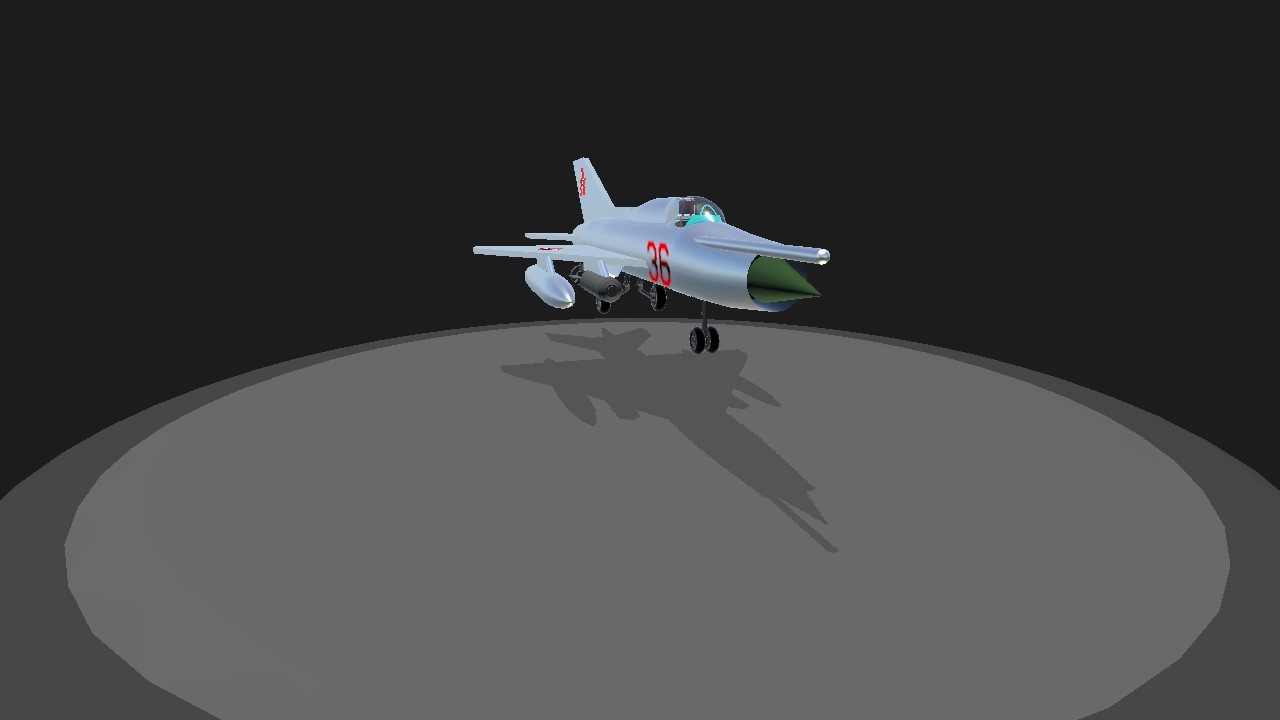
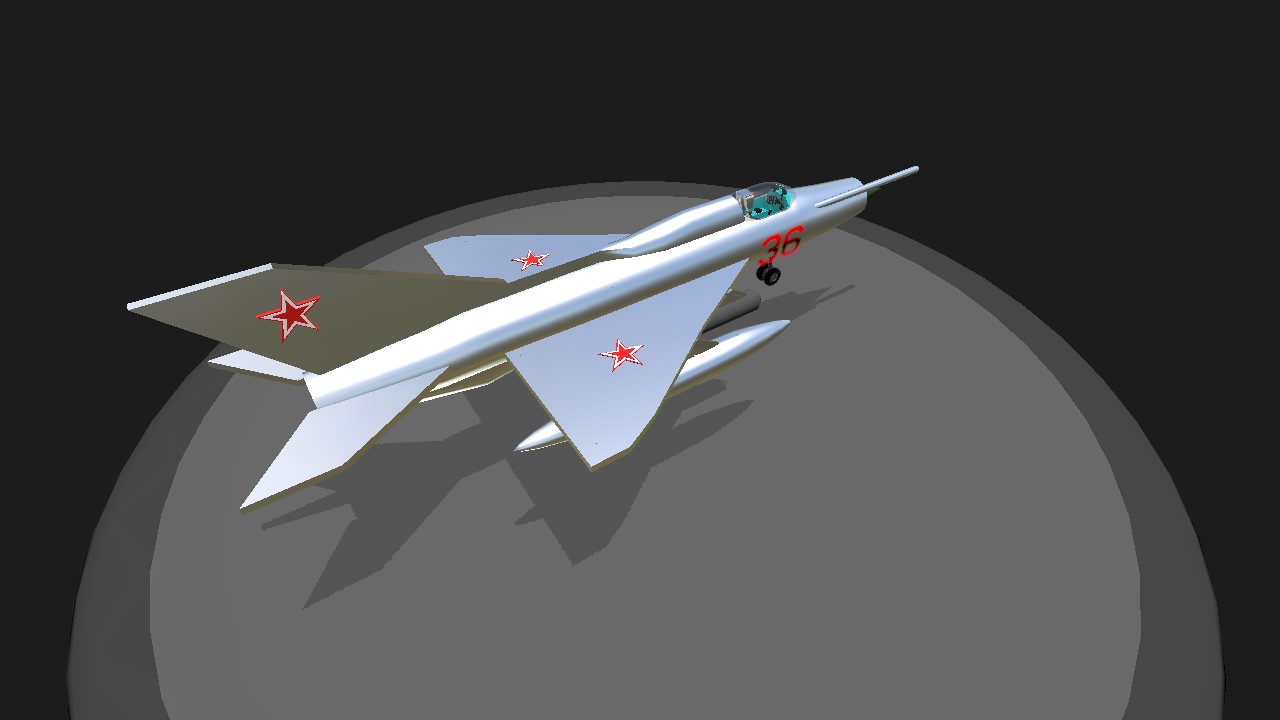
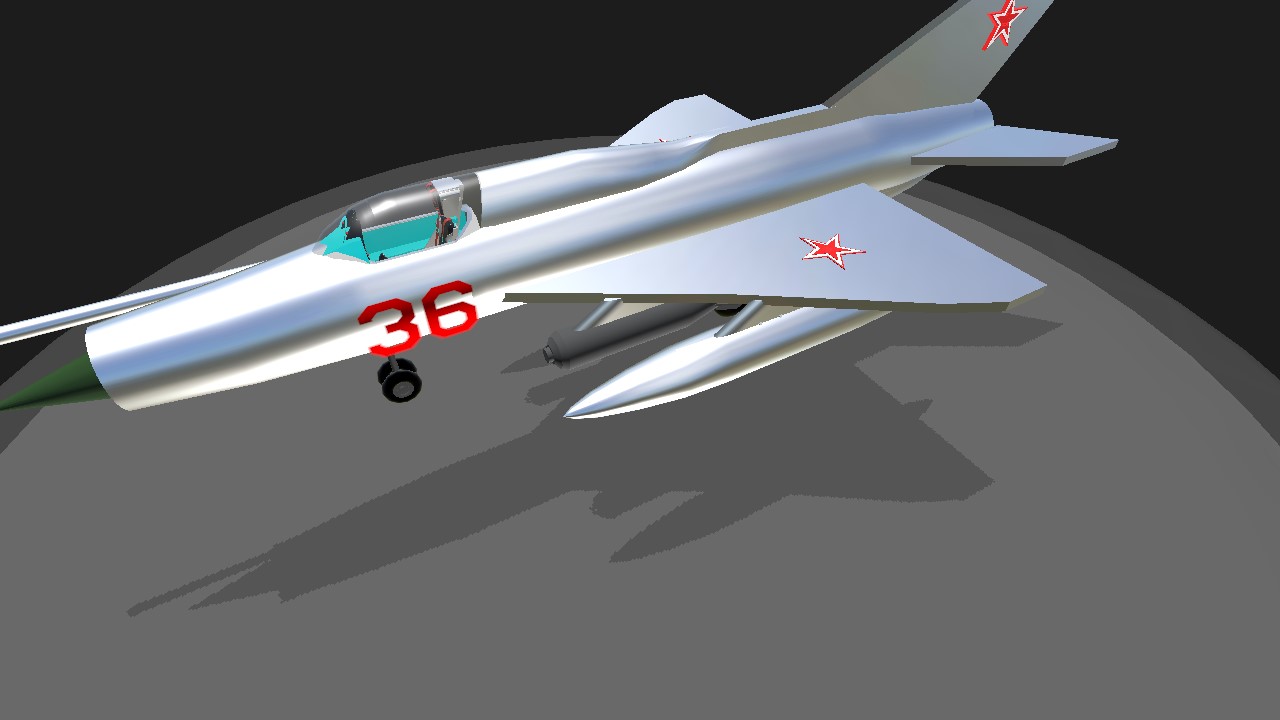
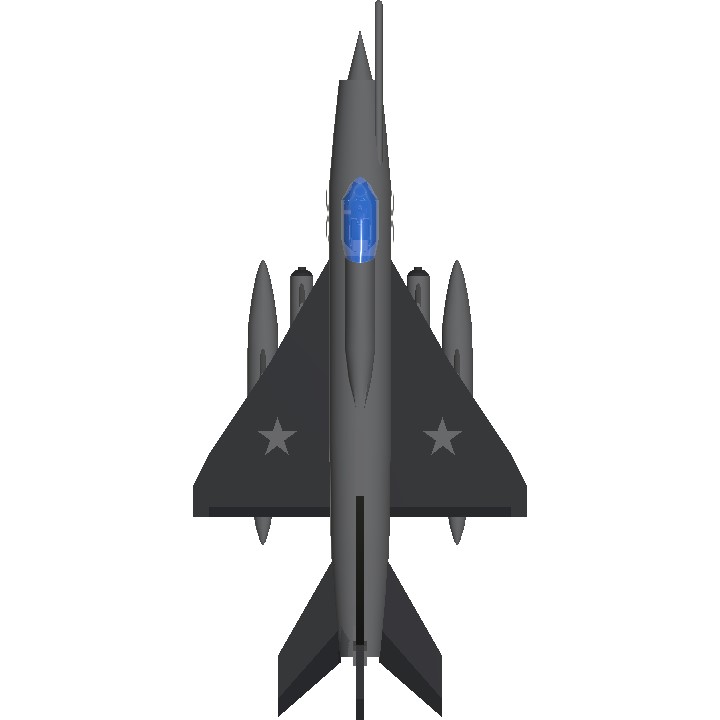
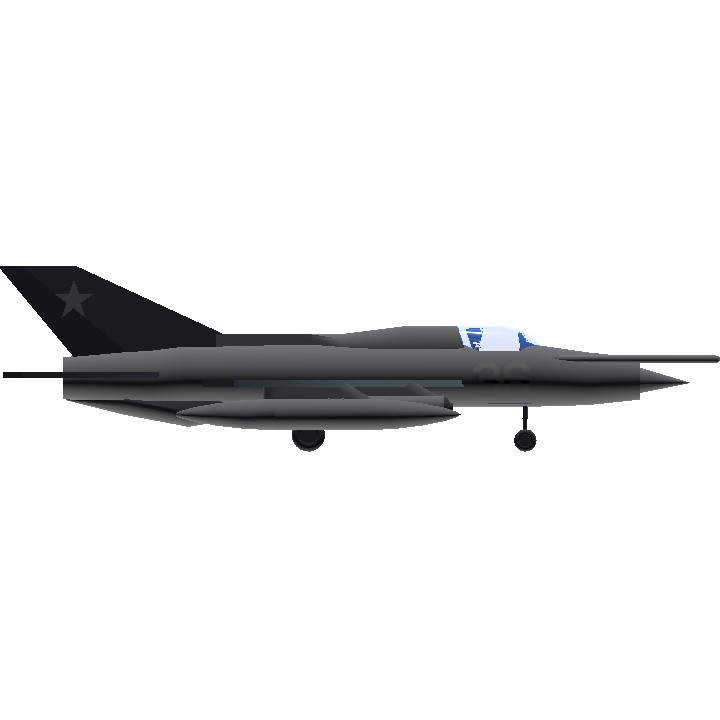

@Dragoranos Thanks for the information
@Dallasfrompayday There were no supersonic aircraft in the Korean War.
The first flight of the MiG-21 was in 1955. The Korean war ended in 54
@Dragoranos Im pretty sure that early variants of the MIG-21 served in the Korean War maybe not the BIS.
Not Korean war build